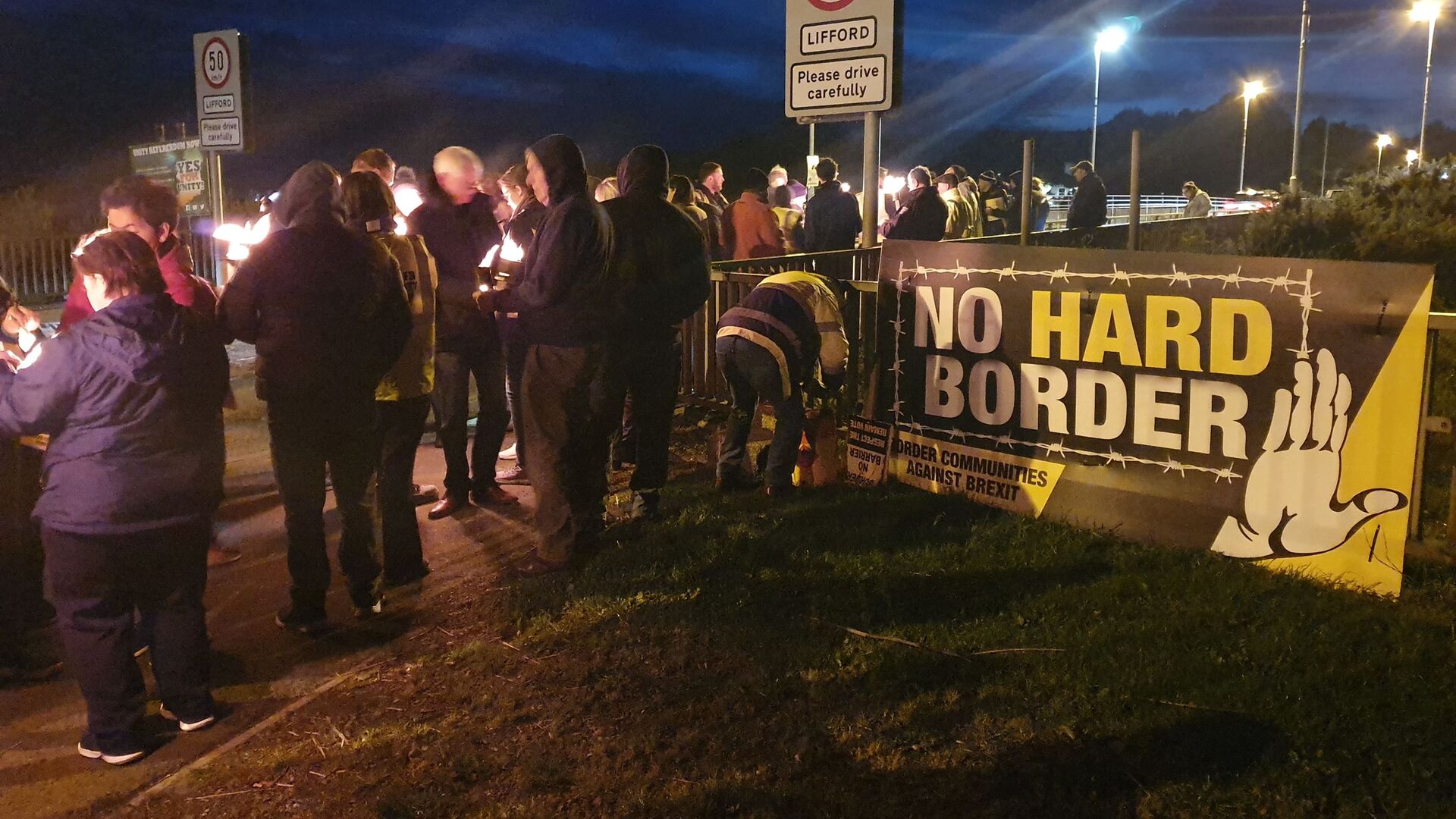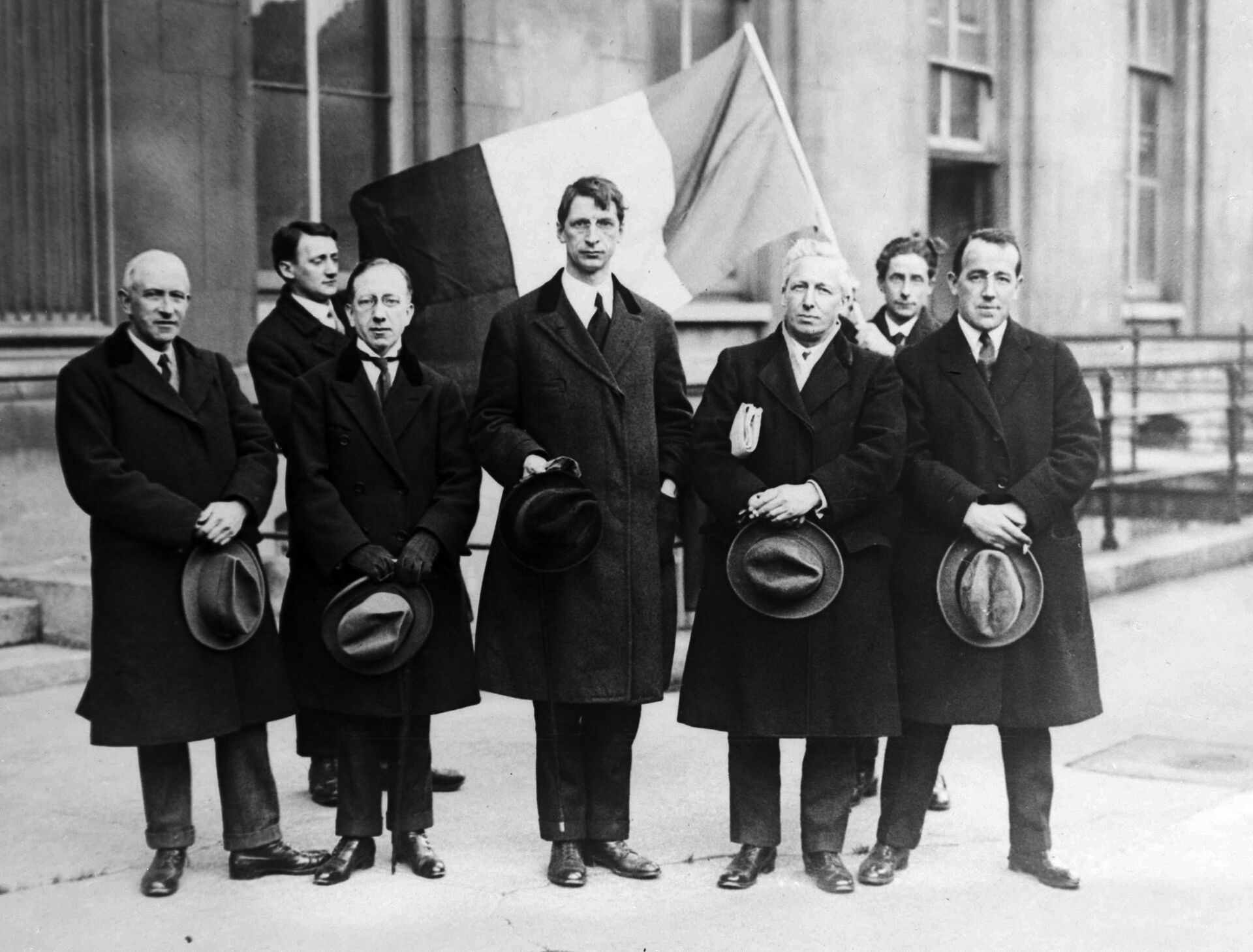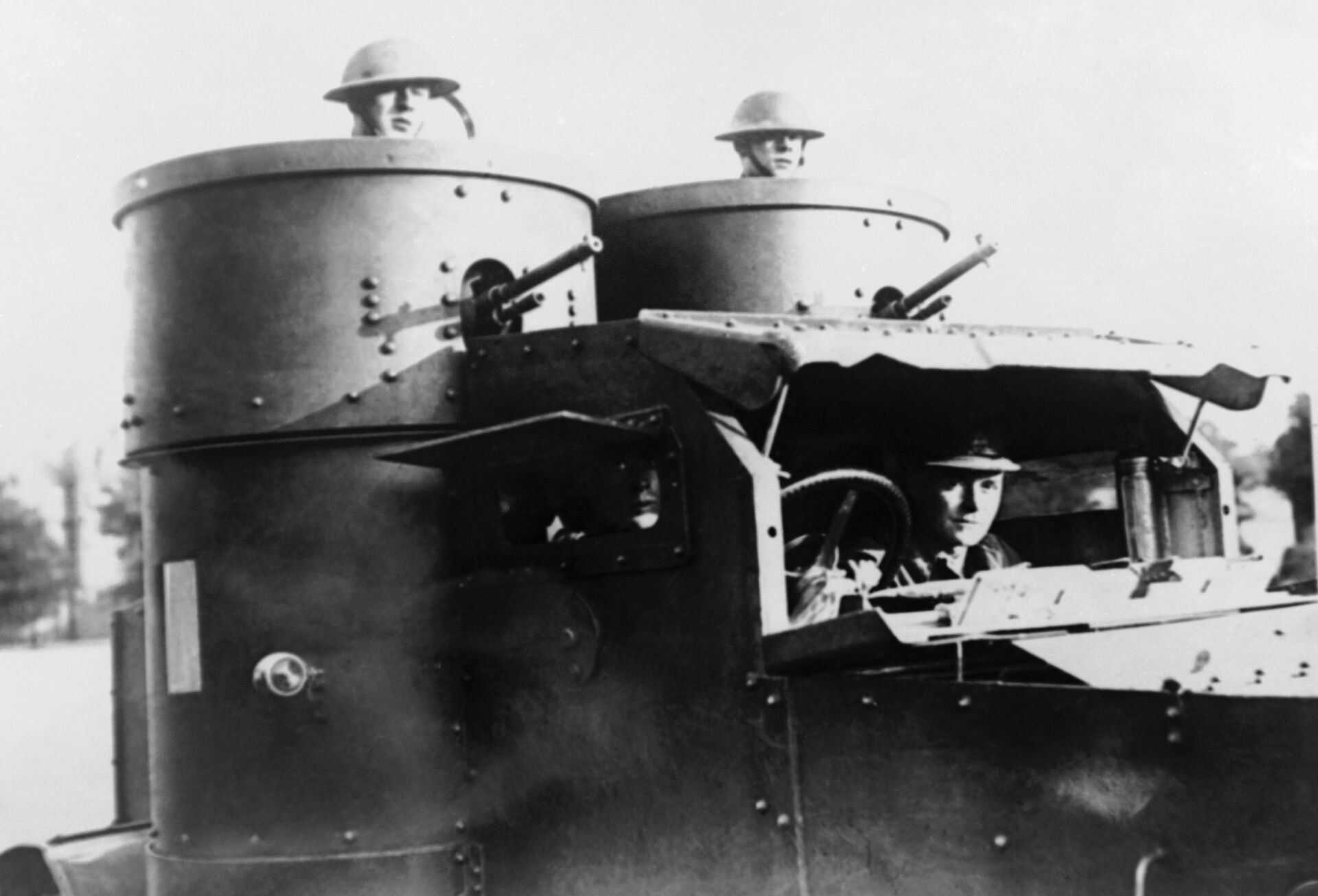From Civil War to 'Sausage War': 100 Years of Conflict and Aggravation in Ireland
15:12 GMT 08.09.2021 (Updated: 15:15 GMT 28.05.2023)

© Sputnik / Chris Summers
Subscribe
Longread
In the summer of 1921, after two years of fighting, a ceasefire war was called on the island of Ireland and the British government and Irish nationalists agreed to negotiations. So what happened next and why does the status of the north of Ireland remain as much of a problem today as it was then?
The British government said this week it was extending a “grace period” on implementing checks on goods travelling from the British mainland to Northern Ireland in the wake of the post-Brexit trade deal with the European Union.
London wants to renegotiate the Northern Ireland Protocol, which came into effect earlier this year, after triggering big opposition among unionists and loyalists in Northern Ireland.
London wants to renegotiate the Northern Ireland Protocol, which came into effect earlier this year, after triggering big opposition among unionists and loyalists in Northern Ireland.
The deal includes chilled meats and has been dubbed the "sausage war" by journalists.
But 100 years ago British and Irish politicians had a lot more fundamental questions on their plate than the process of sending meat goods from Liverpool to Belfast or vice versa.
Nationalists in Ireland - a predominantly Celtic, Catholic nation with its own Gaelic language which was still widely spoken on the west coast - had been demanding independence, or at least “home rule”, for decades and in 1916 a group of Irish republicans staged the Easter Rising in Dublin, which was violently put down by the British state.

Eamon de Valera (centre) with anti-Treaty allies in Ireland
© AP Photo
In December 2018 Sinn Fein, led by Éamon de Valera, won an overwhelming majority of Irish seats in that year’s British general election and the following month declared independence.
On the same day independence was declared - Britain rejected it - two officers of the Royal Irish Constabulary were killed by the Irish Republican Army (IRA), the military wing of Sinn Fein.
It was the start of the Irish War of Independence.
Sir Edward Carson’s unionists had won 25 seats in Ulster in the December 1918 election and demanded Northern Ireland, with its Protestant majority, remain part of the UK if the rest of the island became independent.
In May 1921 the Government of Ireland Act came into force, permanently merging the six counties of Northern Ireland into the UK while the other 26 counties were to have a form of home rule.

British troops in Ireland in 1920
© AP Photo
On 11 July, 1921, a ceasefire was agreed between the British government and the IRA, pending negotiations on a final settlement to the Irish problem.
Nine days later the British Prime Minister, David Lloyd George, wrote to de Valera.
In that letter he wrote: “The British government are actuated by an earnest desire to end the unhappy divisions between Great Britain and Ireland which have produced so many conflicts in the past and which have once more shattered the peace and well-being of Ireland at the present time.”
But he later goes on to make it quite clear that London wanted Ireland to be a semi-autonomous state within the British Empire, rather than a fully fledged independent republic.
Lloyd George wrote: “In South Africa the Transvaal Republic and the Orange Free State have joined with two British colonies to make a great self-governing union under His Majesty's sway. The British people cannot believe that where Canada and South Africa, with equal or even greater difficulties, have so signally succeeded, Ireland will fail.”
On 4 September, 1921, de Valera finally replied to the letter, rejecting the idea of limited self-government within the British Empire and also demanded the island of Ireland be united, not divided.
On 7 September, the British Cabinet met in the Scottish city of Inverness - close to where Lloyd George was on holiday.
They finally suggested a conference be held later that month in Inverness but a pre-condition would be that Ireland agreed to stay in the empire.
The British cabinet meets outside of England for the first time, holding an emergency session at Inverness, Scotland. Prime Minister Lloyd George is on vacation in nearby Gairloch. The meeting regards ongoing negotiations with Irish President Eamon de Valera. pic.twitter.com/DSJAU9cLc2
— 1921 Live (@100YearsAgoLive) September 7, 2021
A week later the Irish agreed to send five representative to Inverness but refused to drop their demand for full independence.
Lloyd George immediately cancelled plans for the Inverness conference and prepared to return to London.
On 29 September, Lloyd George invited de Valera to London for talks the following month and dropped the pre-condition.
De Valera accepted but instead of going himself he sent a delegation, led by Michael Collins and Arthur Griffith.
Historians have argued about de Valera’s reasons, with some claiming he knew what the outcome of the talks would be and did not want to be tainted with an agreement with did not satisfy the IRA’s radicals.
On 11 October, 1921, the Anglo-Irish peace talks began, but negotiations made slow progress.
In late November the Irish delegation returned to Dublin so that Collins and Griffith could consult with de Valera and the other Sinn Fein leaders.
By 3 December it had become clear that Collins and Griffith would not be bringing back the 32-county Irish republic which Sinn Fein wanted.
Three days later the five Sinn Fein negotiators - who had been sent as plenipotentiaries, with the power to sign a treaty without having to refer back for final approval - the Anglo-Irish Treaty was signed.
Collins later claimed at the 11th hour Lloyd George had threatened to renew hostilities and bring a "terrible and immediate war" to Ireland if the treaty was not agreed.
De Valera was furious when he heard the terms of the treaty - an Irish Free State would be created in the 26 counties of the south, which would remain part of the British Empire, and Dublin would give up its claims on the north.
Sinn Fein’s cabinet decided by four votes to three to recommend the treaty to the Irish parliament, the Dáil, which approved it by 64 votes to 57.
But de Valera broke away from Sinn Fein and the stage was for a political and, possibly military conflict.
In March 1922 de Valera gave a speech in which he said: "If the Treaty were accepted, the fight for freedom would still go on…and the IRA would have to wade through the blood of the soldiers of the Irish government, and perhaps through that of some members of the Irish government to get their freedom.”
In June 1922 the Pro-Treaty Sinn Fein, led by Collins, beat de Valera’s Anti-Treaty Sinn Fein in a general election.
The Irish Free State was created but the Irish Civil War broke out.
In August 1922 was Collins assassinated by the IRA, 10 days after Griffith dropped dead of a brain haemorrhage.
The Anti-Treaty forces eventually surrendered and in 1932 de Valera became its head after his Fianna Fáil party defeated the ruling Cumann na nGaedheal, which would become Fine Gael the following year.
For the next 90 years Fianna Fáil and Fine Gael would dominate Irish politics but the bitterness of the Irish Civil War gave war to a more traditional party political rivalry.
But the border which had been created to appease Sir Edward Carson’s unionists would come back to haunt Ireland.
Irish republicans - mostly Catholic - north of the border would launch a terrorist war against the British state in the late 1960s and, although the Good Friday Agreement brought it to an end, the border issue continues to plague Anglo-Irish relations.
Brexit Minister David Frost said talks with the EU would continue “determine whether a constructive process can be established" to replace the Northern Ireland Protocol, which effectively moves the border to the middle of the Irish Sea, much to the chagrin of unionists and loyalists.


